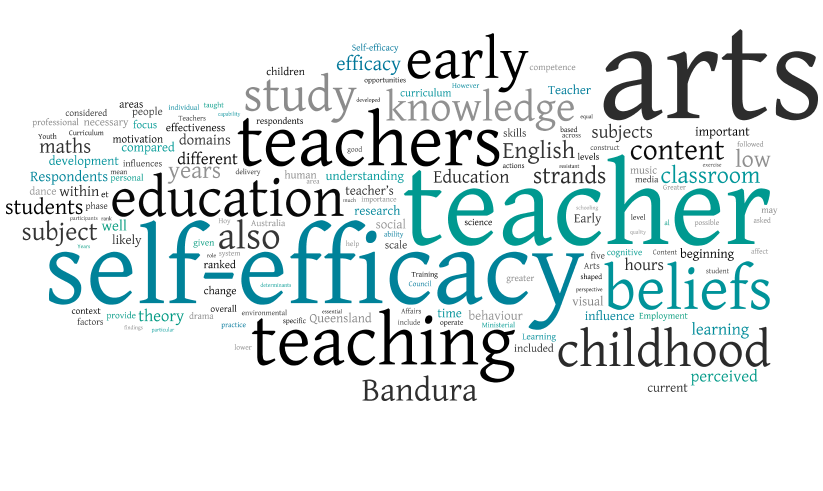An Investigation of Early Childhood Teacher Self-Efficacy Beliefs
in the Teaching of Arts Education
Susanne Garvis
Donna Pendergast
Griffith University, Australia
Citation: Garvis, S. & Pendergast, D. (2011). An investigation of early childhood teacher self-efficacy beliefs in the teaching of arts education.
International Journal of Education & the Arts, 12(9). Retrieved [date] from
http://www.ijea.org/v12n9/.
Abstract
The self-efficacy beliefs teachers hold about their ability to teach subjects shapes their competence in teaching. Teacher self-efficacy is defined as teacher beliefs in their ability to perform a teaching task. If teachers have strong teacher self-efficacy in the teaching of arts education, they are more likely to incorporate arts in the classroom. Alternatively, if teachers have weak teacher self-efficacy in the teaching of arts education they are less likely to include aspects of the arts in their curriculum. Little is known about teacher self-efficacy beliefs towards arts education in early childhood education. Since arts education is an important element in the curriculum of any classroom - including all early childhood classrooms - investigation of the beliefs that shape teacher practice is desirable.
In 2010, a survey was distributed using convenience sampling to early childhood teachers throughout Queensland. There were 21 respondents, representing a response rate of 27%. Each completed an adapted version of the Teachers' Sense of Efficacy Scale for Arts Education. Perceived competence towards each of the five arts strands (dance, drama, media, visual arts and music) were compared to perceived competence in maths and English. The number of hours taught in each of the arts strands was also investigated. Findings suggest all of the respondent early childhood teachers had greater perceived competence for teaching maths and English compared to any of the arts strands. Some early childhood teachers did not engage with some of the arts strands (particularly drama, dance, media) in their daily classrooms. These findings provide glimpses of the current day-to-day running of early childhood classrooms and the role of arts education in the current climate of policy reform and accountability.
Visual Abstract

This article is available in PDF format.
|

